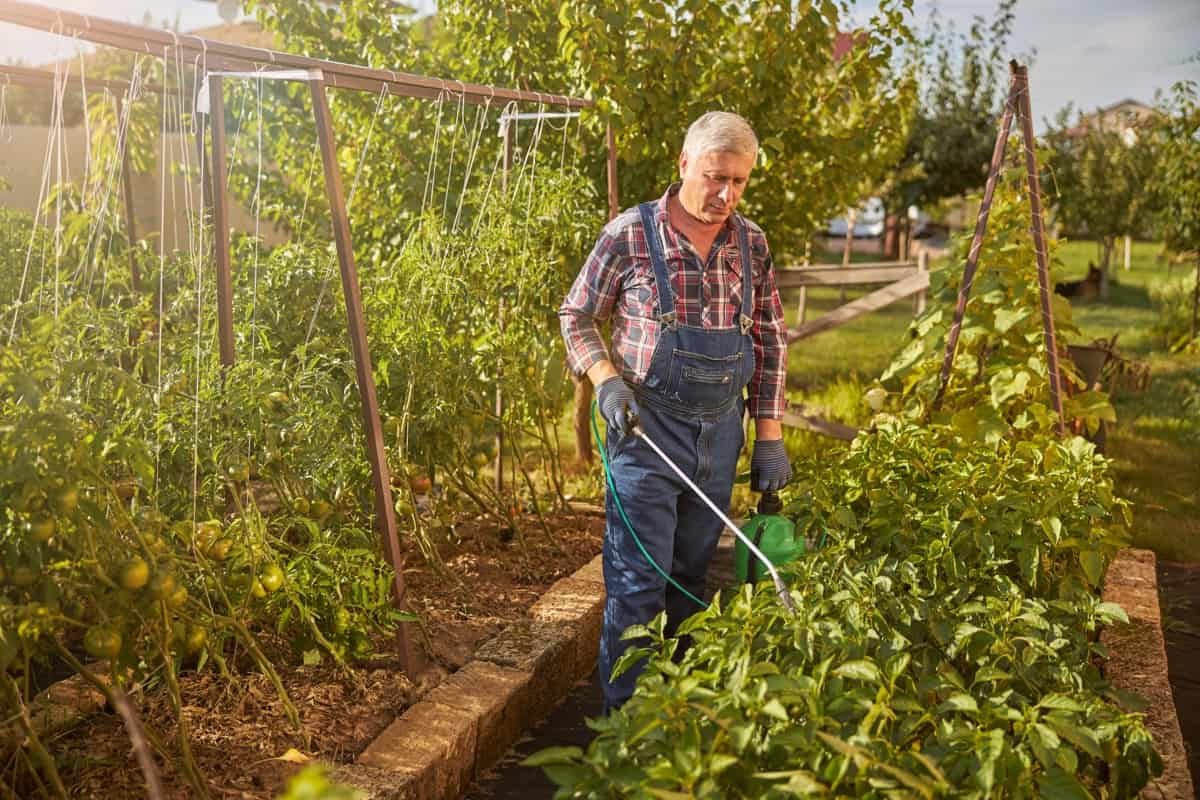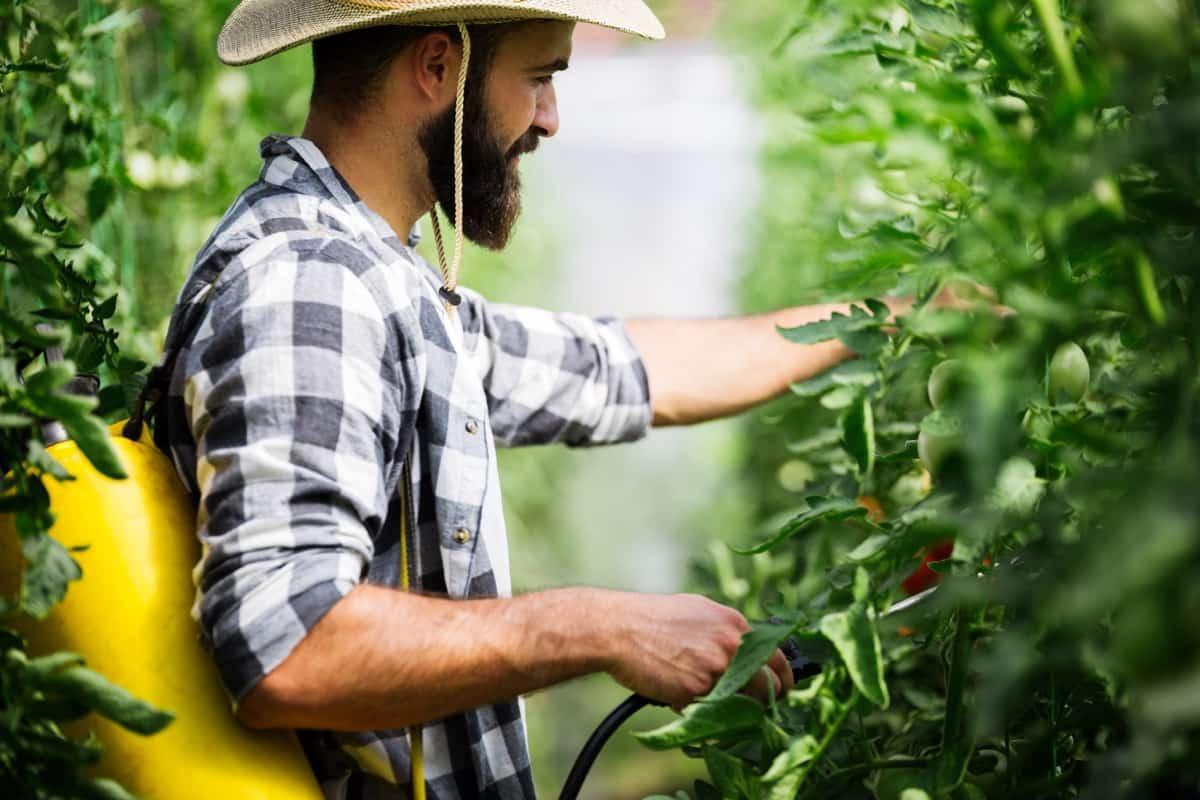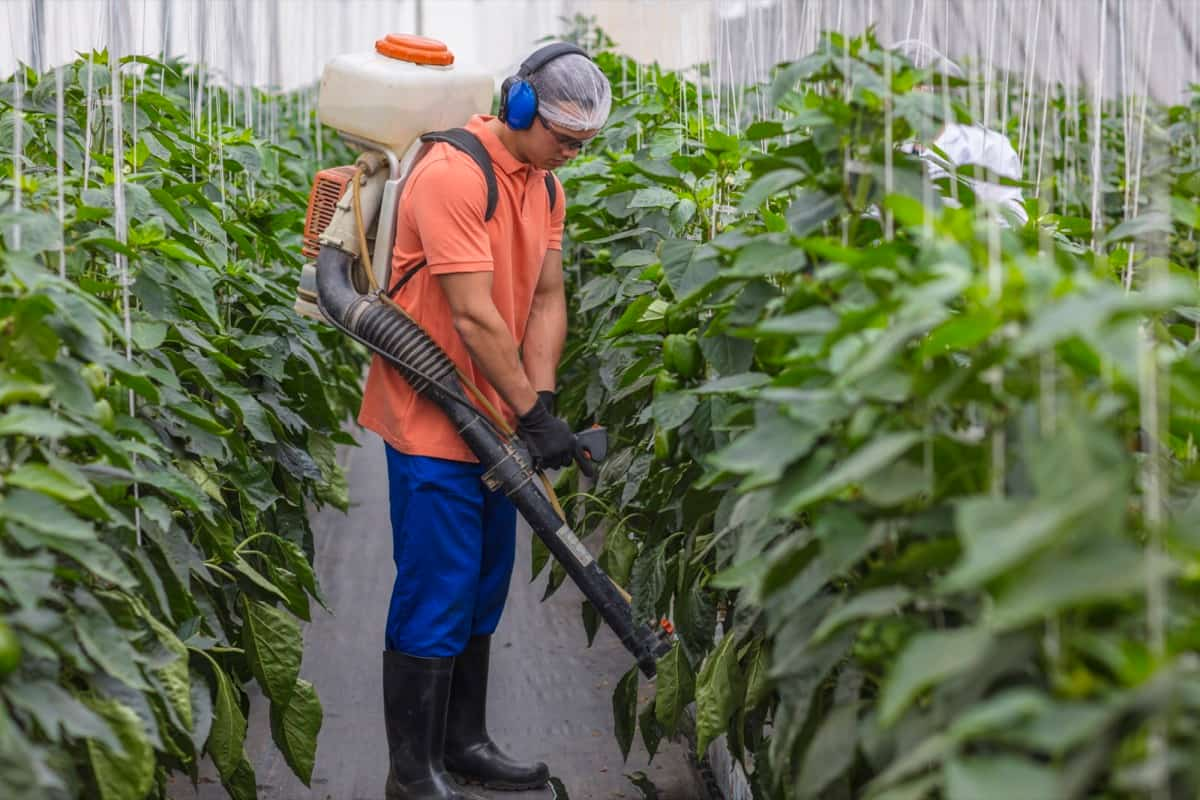Downy mildew is a plant disease caused by parasitic organisms more closely related to algae than fungi. It primarily affects leaves, stems, and fruit, causing stunted growth, yellowing, and wilting. It requires water and cooler temperatures to survive and is most commonly found in plants during the spring. Downy mildew is more difficult to control and prevent than powdery mildew and can require frequent application of fungicides during the growing season.

How to Manage Downey Mildew in Home Garden
Disease Cycle of Downey Mildew
- The disease cycle of downy mildew begins in the soil, where oomycete spores are windblown or splashed onto nearby plants.
- The spores latch onto the underside of leaves and penetrate the leaf’s surface with their mycelia, causing downy growth and spotting on the upper side of leaves.
- A mat of sporangia forms underneath the leaf, which releases more spores. These spores can colonize other plants if conditions are right and can also be dispersed into the soil via rotting plant debris, where they can survive up to five years.
- The mildew’s mycelia spread throughout the plant’s stems, potentially infecting new growth. Infected plants may produce damaged fruit or have problems with new growth.
Causes of Downey mildew
- Parasitic organisms from the Peronospora or Plasmopara genus cause downy mildew.
- These organisms are more closely related to algae than fungi and require water to survive and spread.
- They are spread from plant to plant by airborne spores and are favored by wet weather conditions with prolonged leaf wetness.
- Cool temperatures also promote the growth and spread of downy mildew.
Garden Plants Which are affected by Downey Mildew
- Annuals: snapdragon, Salvia, alyssum, pansy, sunflower, Impatiens walleriana, coleus, statice, Verbena, ornamental cabbage, and basil
- Perennials: Aster, Buddleia, Coreopsis, Geranium (not Pelargonium), Geum, Gerbera, Lamium, Delphinium, Veronica, and Viola
- Vegetables: cucumbers, squash, melons, and spinach
In case you missed it: How to Manage Bacterial Leaf Spot in Home Garden: Symptoms, Cultural, Biological, Chemical, Organic Methods of Management

Symptoms of Downey Mildew Attack on Home Garden
- The initial symptoms include yellow to tan angular lesions that can appear at the center of the plant’s leaves and then spread between the small leaf veins.
- The spots enlarge and turn brown with a fine gray to purplish mold forming on the underside of the leaves during wet weather.
- The affected leaves may also become distorted, and the plant may develop stunted growth. As the disease progresses, it can quickly kill leaves and entire plants, especially during warm, wet weather.
- The damage can lead to reduced yields or complete crop loss if the disease is untreated.
Cultural Management of Downey Mildew in Home Garden
- Cultural management is an important component in managing downy mildew in home gardens. This includes removing and disposing of affected leaves and plants, avoiding dense planting and controlling weeds for good air circulation, avoiding prolonged leaf wetness and overhead watering, and watering plants early in the morning to allow leaf surfaces to dry out quickly.
- Crop rotation and avoiding replanting with the same host for at least a year is also recommended.
- In addition, cultivars with resistance to downy mildew are available for some vegetable crops and a limited number of resistant Impatiens cultivars.
- However, resistance does not always guarantee freedom from infection, and the situation with lettuce and spinach downy mildew is particularly complex due to multiple races.
Biological Management of Downey Mildew in Home Garden
- Fungicides can prevent downy mildew, but they should be used carefully and as part of an integrated pest management strategy.
- Copper fungicides are used to control downy mildew, but care must be taken not to build up high levels of copper in the soil.
- Neem oil is used as a fungicide in many plants, but it should be used cautiously to avoid harming beneficial insects. Bacillus subtilis is a type of fungicide licensed for organic vegetables and can be used to prevent downy mildew growth.
Chemical Management of Downey Mildew in Home Garden
- Chemical management of downy mildew in home gardens typically involves using fungicides.
- Copper and sulfur fungicides are commonly used to control downy mildew. These fungicides work by inhibiting the growth of the downy mildew organism.
Organic Management of Downey Mildew in Home Garden
Bordeaux mixture: It is a traditional fungicide made from copper sulfate and hydrated lime. It is an effective preventive treatment against downy mildew and should be applied regularly at the beginning of spring and in the fall. Treatments should also be done during the entire vegetative phase of the plants. Treating regularly, on average, every two weeks and after every rainfall is recommended. If downy mildew appears, only a curative treatment will have any effect.
Baking soda: It is another excellent organic solution to treat downy mildew. It creates an alkaline environment that inhibits the growth of the fungus. For this treatment, dissolve one tablespoon of baking soda in 1 quart (1 liter) of water, ideally rainwater or mineral water, for softer water. In dry weather, spray this mixture on all the leaves, making sure to spray both on the top and underside.
In case you missed it: Management of Pests in Kitchen Garden: Cultural, Biological, Organic, and Natural Control Methods

Conclusion
In conclusion, downy mildew can seriously threaten plant health and productivity. However, home gardens offer chemical and organic treatments for managing this disease. Chemical management options include copper and sulfur fungicides, while organic treatments such as Bordeaux and baking soda can also be effective.
Preventative measures, such as regular applications of fungicides and careful monitoring of plants, can be key to preventing the spread of downy mildew. Home gardeners can help protect their plants and ensure a successful by taking proactive steps to manage downy mildew.
- Beneficial Insects in Pest Management
- Natural Solutions for Pest Control in Flower Gardens
- Types of Fungicides Used in Agriculture
- Common Issues in the Fruit Development Stage of Pomegranate Farming
- Fruit Development Issues in Papaya: Easy Solutions and Treatment
- Soil-Borne Diseases and How to Protect Your Plants
- Practices to Prevent Disease Spread in the Garden
- From Wilted to Thriving: How to Treat Root Rot Naturally in Houseplants
- Natural Remedies to Cure Brown Spots on Fig Tree Leaves